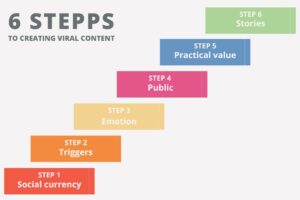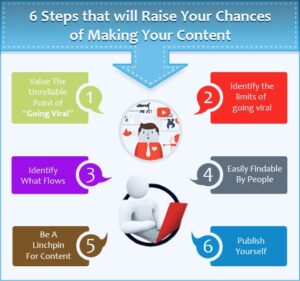How to Create Viral Content: A Step-by-Step Guide to Going Viral Online
In this comprehensive guide, we’ll show you exactly how to create viral content, step by step. Whether you’re a marketer, creator, or entrepreneur, these proven strategies will help you craft content that resonates, connects, and most importantly—goes viral.

The Challenge of Creating Viral Content
Viral content doesn’t happen by accident—it’s the result of strategy, psychology, and timing. But here’s the catch:
- There’s more content than ever before.
- Algorithms change constantly.
- Audiences are overwhelmed and have short attention spans.
So how do you stand out in such a crowded space? The answer lies in understanding what makes content truly “viral.”
How to Create Viral Content: A Step-by-Step Framework
Follow this actionable roadmap to increase your chances of creating content that goes viral:
Step 1: Understand Your Audience Deeply
Before creating any content, ask yourself: Who am I speaking to?
- What are their pain points?
- What emotions do they respond to?
- Which platforms do they use most?
Use tools like Google Analytics and social media insights to gather data.
Step 2: Focus on Emotion Over Logic
According to research from the Association for Psychological Science, emotional content gets shared more often than rational content.
Focus on evoking one of these core emotions:
- Joy
- Anger
- Surprise
- Fear
- Sadness
- Excitement
Step 3: Leverage Trends (But Stay Authentic)
Jumping on trends can give your content a massive boost—especially if you add your own twist.
Use tools like:
Example: When Netflix released “Squid Game,” creators who made Squid Game-themed content saw huge engagement spikes.
Step 4: Optimize for Shareability
Make it easy—and appealing—for users to share your content. Here’s how:
- Add social sharing buttons
- Create quote cards or shareable images
- Include clear calls-to-action (CTAs) like “Click to share”
Step 5: Promote Strategically
Even great content needs a push. Use these tactics to amplify your reach:
- Post at peak times
- Engage in relevant communities (Reddit, Discord, Facebook Groups)
- Collaborate with influencers or micro-influencers

Proven Tips to Increase Virality
Here are some best practices used by top marketers and content creators:
- Keep it short and punchy: Attention spans are shrinking. Get to the point quickly.
- Use visuals: Posts with images get 94% more views than text-only posts (Source: HubSpot).
- Be consistent: Virality isn’t a one-off event. Keep publishing high-quality content regularly.
- Test different formats: Try videos, carousels, reels, stories, and blog posts to see what works best.
- Engage with comments: Respond to user feedback to build community and encourage further interaction.

Mistakes That Kill Viral Potential
Avoid these common pitfalls when trying to create viral content:
- Over-optimizing for SEO: Don’t stuff keywords or sacrifice readability for search engines.
- Copying trends blindly: If it doesn’t align with your brand voice, skip it.
- Neglecting mobile optimization: Most users browse on phones—make sure your content looks good there.
- Ignoring analytics: Track performance and learn from what worked (and what didn’t).
- Publishing too infrequently: Consistency builds momentum.
Case Studies & Expert Advice
Let’s look at real-world examples of successful viral campaigns and what we can learn from them:
Case Study 1: Old Spice – “The Man Your Man Could Smell Like”
This campaign went viral due to its humor, memorable character, and rapid response to audience comments across platforms.
“We built a conversation, not just an ad.” – Fernando Machado, CMO of Activision Blizzard

Case Study 2: Airbnb – #LiveThere Campaign
Airbnb focused on local experiences rather than just listings, creating emotionally rich content that resonated globally.
Expert Insight: Rand Fishkin, Founder of SparkToro
“Viral content is about tapping into existing conversations, not forcing new ones. Know where your audience already is and speak their language.”
Frequently Asked Questions About Creating Viral Content
Can anyone create viral content?
Yes! While luck plays a role, following the right strategies dramatically increases your odds.
How long does it take for content to go viral?
It varies—from hours to weeks. Timing, platform, and audience play key roles.
Is paid promotion necessary for virality?
Not always, but it can help boost visibility early on.
Should I chase every trend?
No. Only follow trends that align with your brand values and message.
What types of content go viral most often?
Short-form video, memes, listicles, and emotionally charged stories tend to perform best.
Final Thoughts: Start Creating Viral Content Today
Creating viral content is both an art and a science. It takes creativity, consistency, and a deep understanding of your audience.
Now that you know the secrets behind making content go viral, it’s time to put them into action. Start small, test ideas, and keep refining your approach.
Want more tips on content marketing and growth? Check out our blog or leave a comment below with your thoughts!
